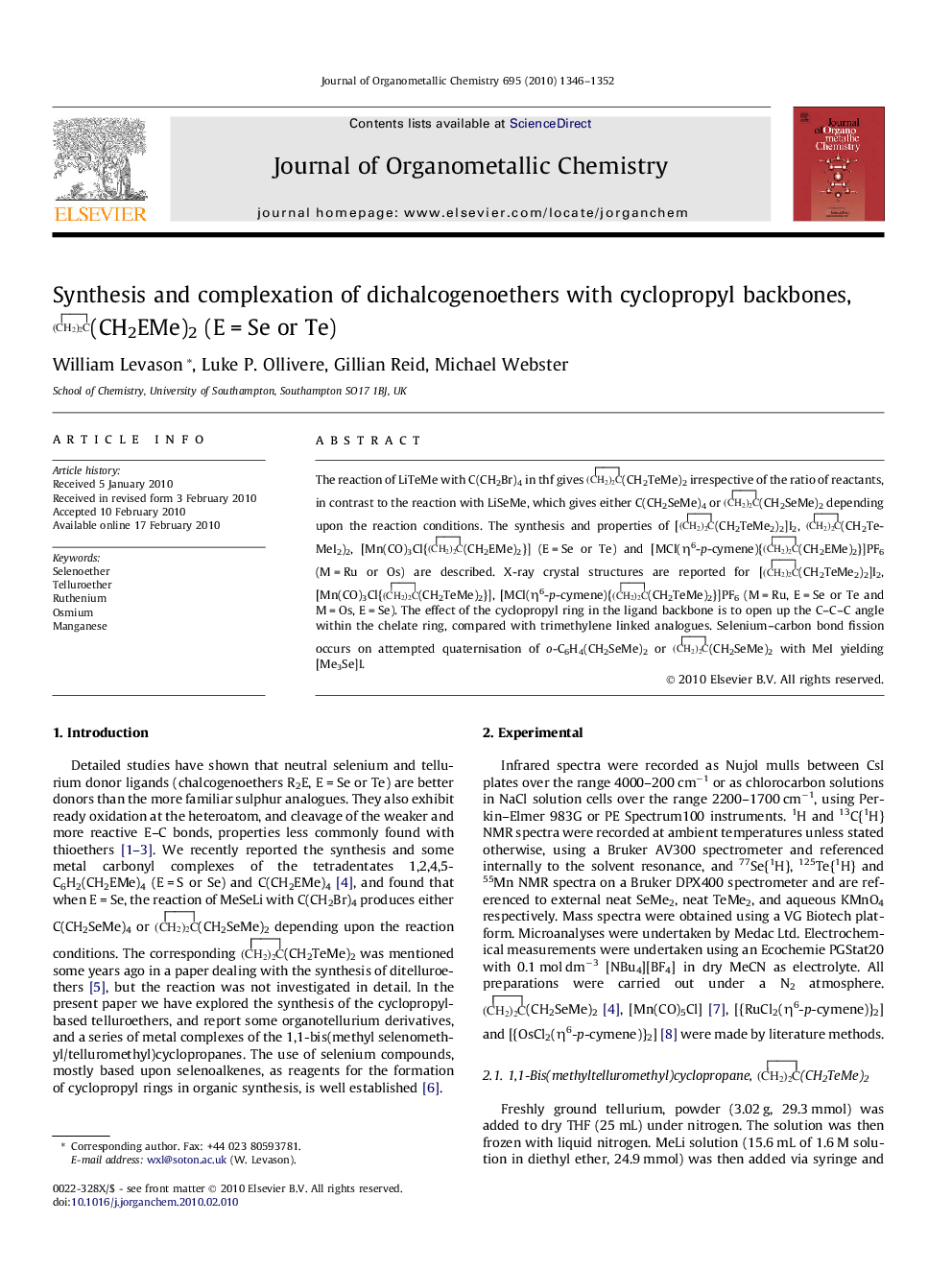| Article ID | Journal | Published Year | Pages | File Type |
|---|---|---|---|---|
| 1324194 | Journal of Organometallic Chemistry | 2010 | 7 Pages |
The reaction of LiTeMe with C(CH2Br)4 in thf gives (CH2TeMe)2 irrespective of the ratio of reactants, in contrast to the reaction with LiSeMe, which gives either C(CH2SeMe)4 or (CH2SeMe)2 depending upon the reaction conditions. The synthesis and properties of [(CH2TeMe2)2]I2, (CH2TeMeI2)2, [Mn(CO)3Cl{(CH2EMe)2}] (E = Se or Te) and [MCl(η6-p-cymene){(CH2EMe)2}]PF6 (M = Ru or Os) are described. X-ray crystal structures are reported for [(CH2TeMe2)2]I2, [Mn(CO)3Cl{(CH2TeMe)2}], [MCl(η6-p-cymene){(CH2TeMe)2}]PF6 (M = Ru, E = Se or Te and M = Os, E = Se). The effect of the cyclopropyl ring in the ligand backbone is to open up the C–C–C angle within the chelate ring, compared with trimethylene linked analogues. Selenium–carbon bond fission occurs on attempted quaternisation of o-C6H4(CH2SeMe)2 or (CH2SeMe)2 with MeI yielding [Me3Se]I.
Graphical abstractThe synthesis of (CH2TeMe)2, some organotellurium(IV) derivatives and complexes [Mn(CO)3Cl{(CH2EMe)2}] (E = Se or Te) and [MCl(η6-p-cymene){(CH2EMe)2}]PF6 (M = Ru or Os) are described.Figure optionsDownload full-size imageDownload as PowerPoint slideFigure optionsDownload full-size imageDownload as PowerPoint slideFigure optionsDownload full-size imageDownload as PowerPoint slideFigure optionsDownload full-size imageDownload as PowerPoint slide
